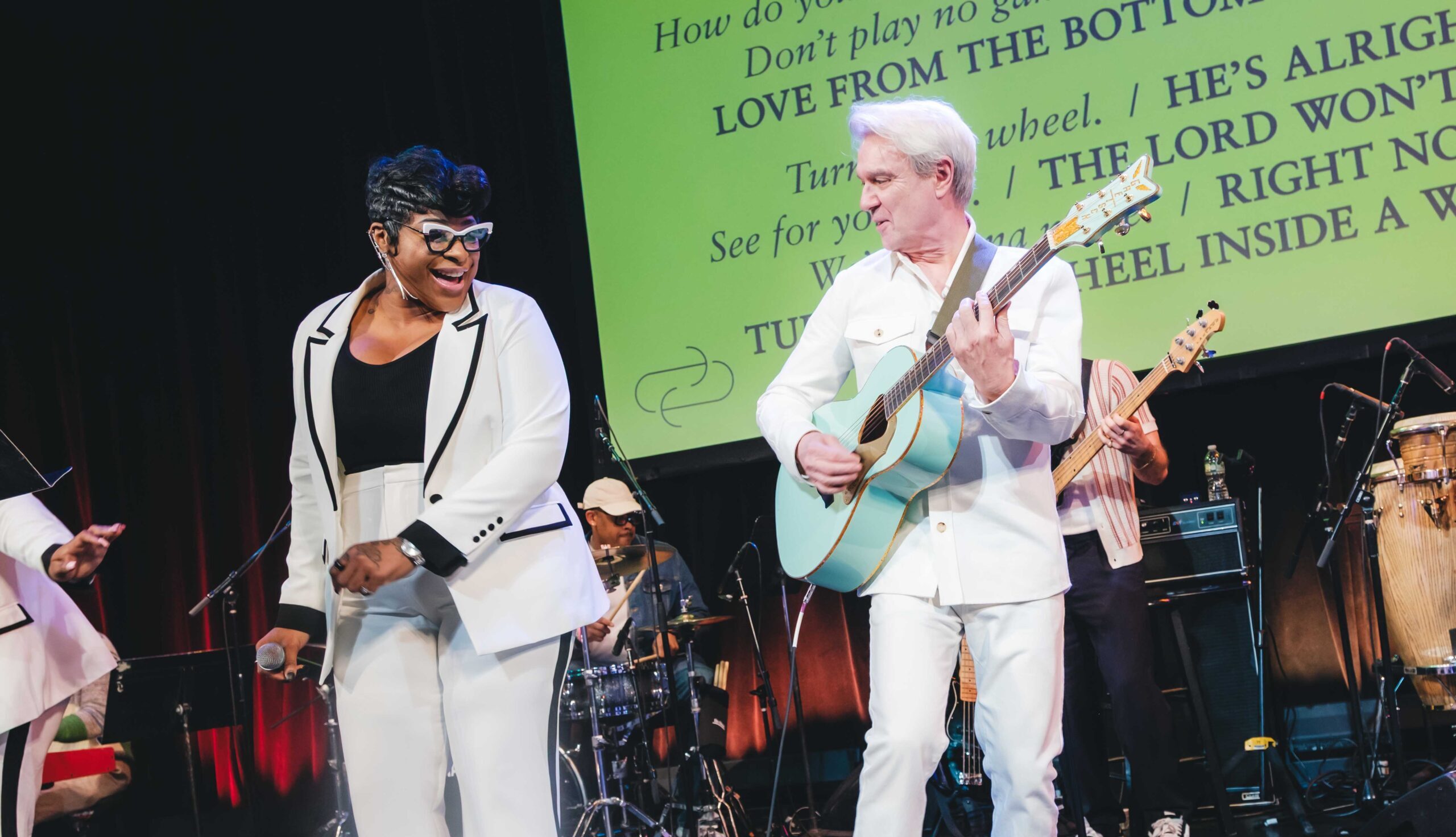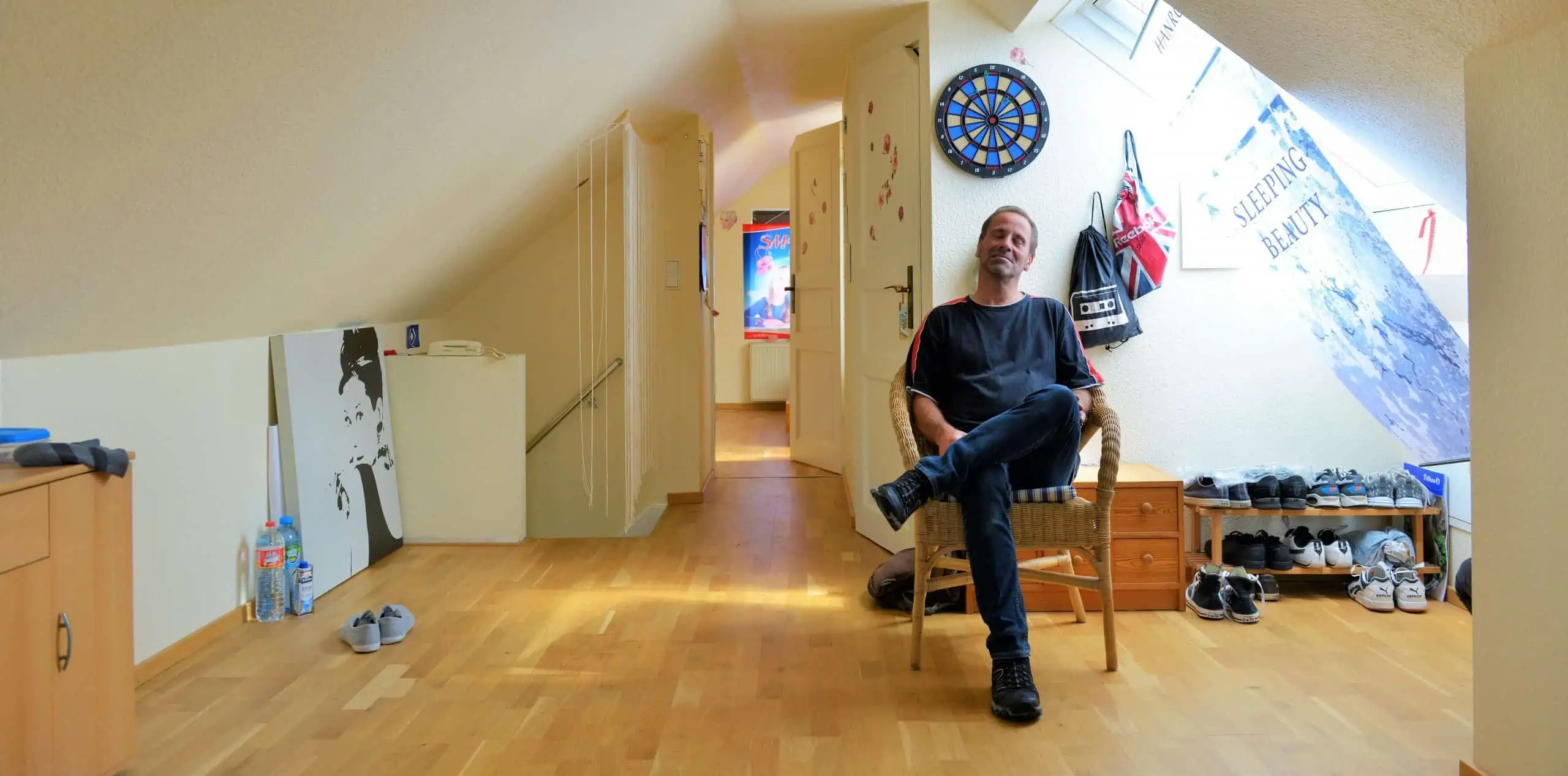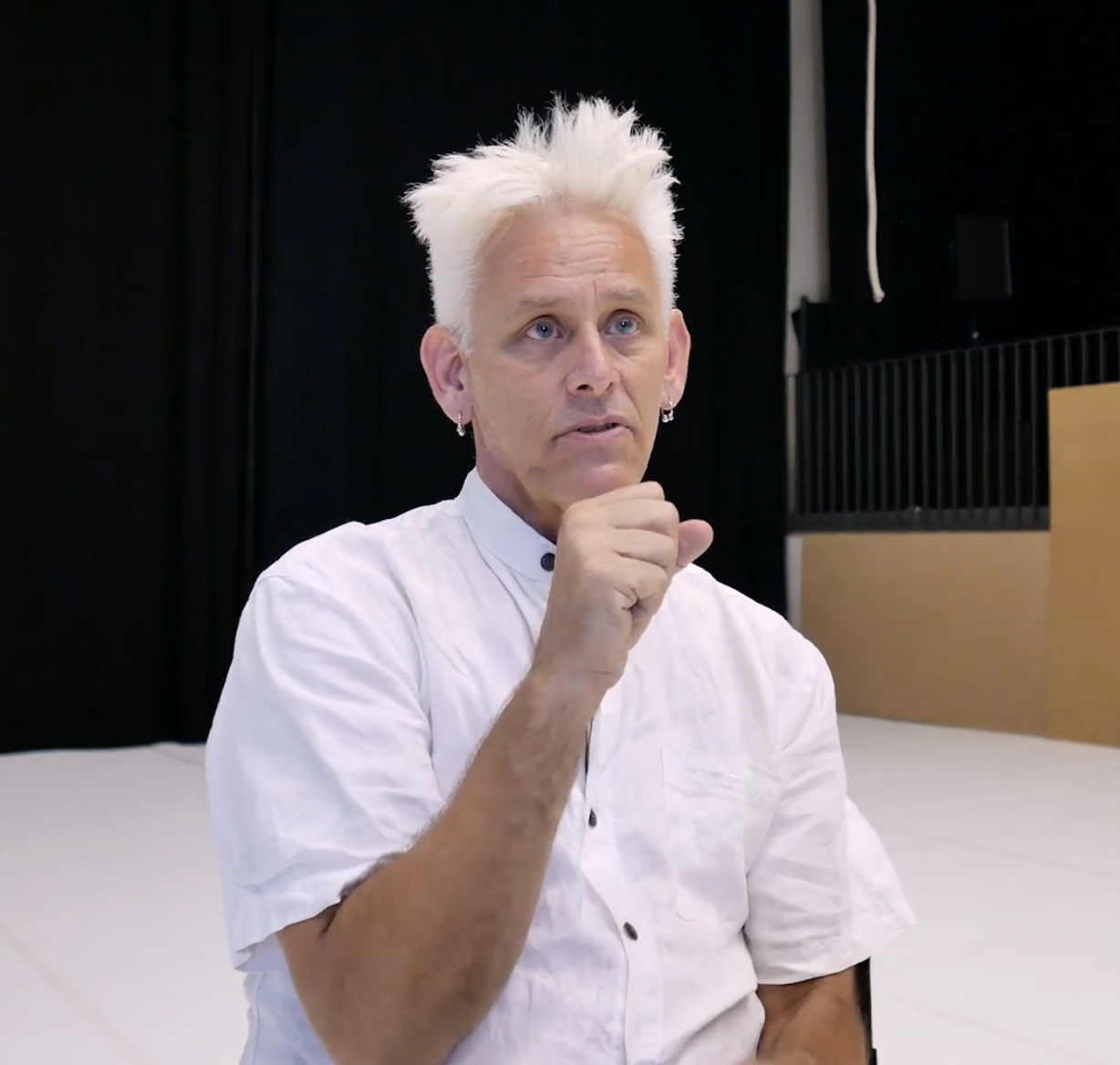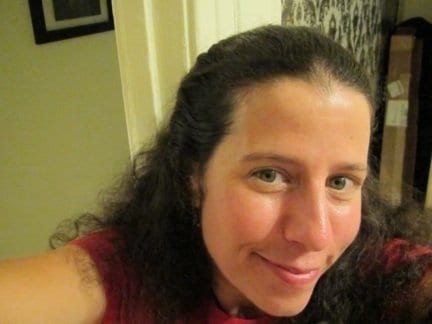This is part one of a two-part series about accessibility in the performing arts. Read part two here.
Standing in a small circle, a group of performers introduced themselves to a smaller group of audience members. The performers went into great detail, relating not only their names and pronouns but also describing themselves and their attire. The audience members, including myself, were then led around the performance space and invited to touch the minimal props and set pieces that would be used in the show — a dance production of short pieces called Solos Lost and Found, presented by the Deborah Slater Dance Theater company. We were even encouraged to lay hands on the body of a dancer as they demonstrated a particularly difficult to explain acrobatic move.
This pre-show “haptic tour” for blind and low-vision (BLV) patrons came courtesy of Jess Curtis’ Gravity, a fellow dance company trialing an audio description service in the Bay Area. After the tour, we received small battery-powered headsets through which we’d receive live commentary from an audio describer, Stephanie Hewitt, whose muffle-mic’d voice murmured directly into our ears as the performance unfolded in front of us.
This was my first experience with an audio-described performance, which took place in 2019 inside the remnants of an old fire station on the San Francisco waterfront. At that point the service was still being developed by Gravity, with funding for this and other trial performances being underwritten by a grant from the Rainin and Haas Foundations. The goal of the grant was to make it possible to offer the service to smaller companies that would otherwise find the cost prohibitive, and to introduce a performance-hungry demographic of blind and low-vision patrons to the work of some of the Bay Area’s more experimental artists.
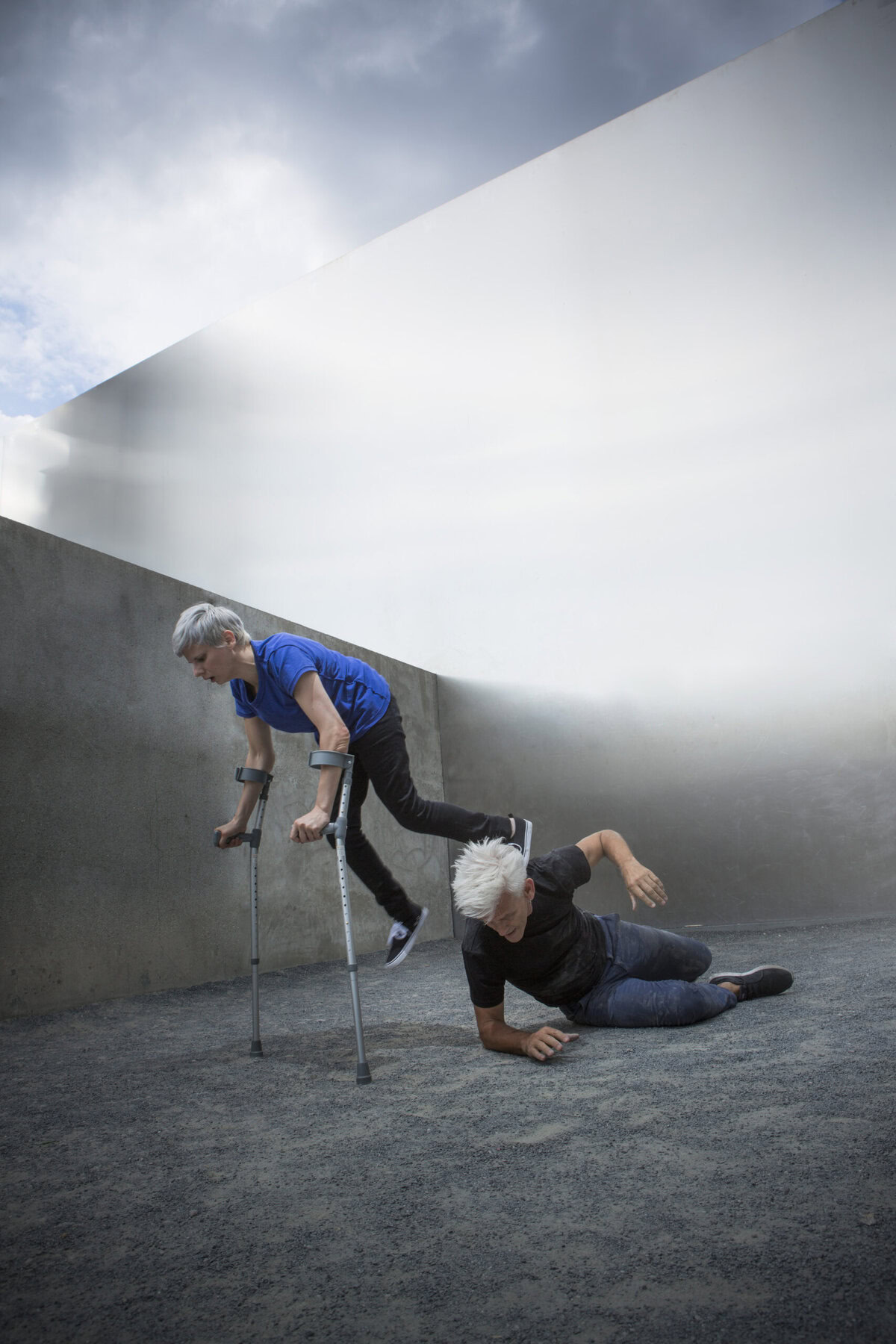
According to the American Foundation for the Blind, there are over 50 million people with vision impairments in the United States, 340,000 of whom are entirely blind. Of those 50 million, over 3.8 million report difficulty seeing even when wearing glasses. And yet, despite audio description being offered regularly as a service in movie theaters and, more recently, by streaming networks, it’s a practice that has yet to become widespread in live performance venues. There are a few regional organizations serving their local communities, and a couple, such as the well-established Audio Description Associates in Maryland, that offer their work farther afield, but as a standard practice in live productions, audio description and haptic or “touch” tours have yet to catch on across the US theater industry.
For Jess Curtis, it took collaborating with Claire Cunningham, a Scottish dancer and choreographer born with osteoporosis, on their acclaimed 2016 duet The Way You Look (at me) Tonight, to be introduced to the world of audio description. This access practice, Curtis noted in February 2024, is relatively common in the UK, where Cunningham was based — but much less so in the US and in Berlin, where he split his time. Working with disability activist artists in the UK such as Maria Oshodi of Extant, and dance audio describer Emma-Jane McHenry, Curtis and Cunningham arrived at an audio description of their show that felt authentic to the piece. Curtis purchased a few wireless headsets to offer to visually impaired audience members, through which they received a pre-recorded description, setting the stage, so to speak, for future forays in the practice.
“I looked around the Bay Area and around Berlin and saw that almost no one was doing audio description,” Curtis explained. “And because the equipment was sitting in a box ready to go on tour, I thought we could try offering this. … I think the first year [2018] we did like three or four audio descriptions in Berlin and three or four test audio descriptions in San Francisco at Z Space and at CounterPulse and…from there [it] took off.”
Calling the project Gravity Access, and folding it into his artistic company, Curtis, with a small core of access consultants, audio descriptors and a part-time administrator, began slowly scaling up an artist-led audio description service geared intentionally towards smaller and independent performance companies at affordable, sliding scale rates. The premise of the project is simple: normalize and support greater accessibility practices in the performing arts, particularly in the area of audio description. Create opportunities for performers and consultants of diverse abilities and access needs. And design a viable blueprint for artists and organizations seeking to do this work in their communities nationwide.
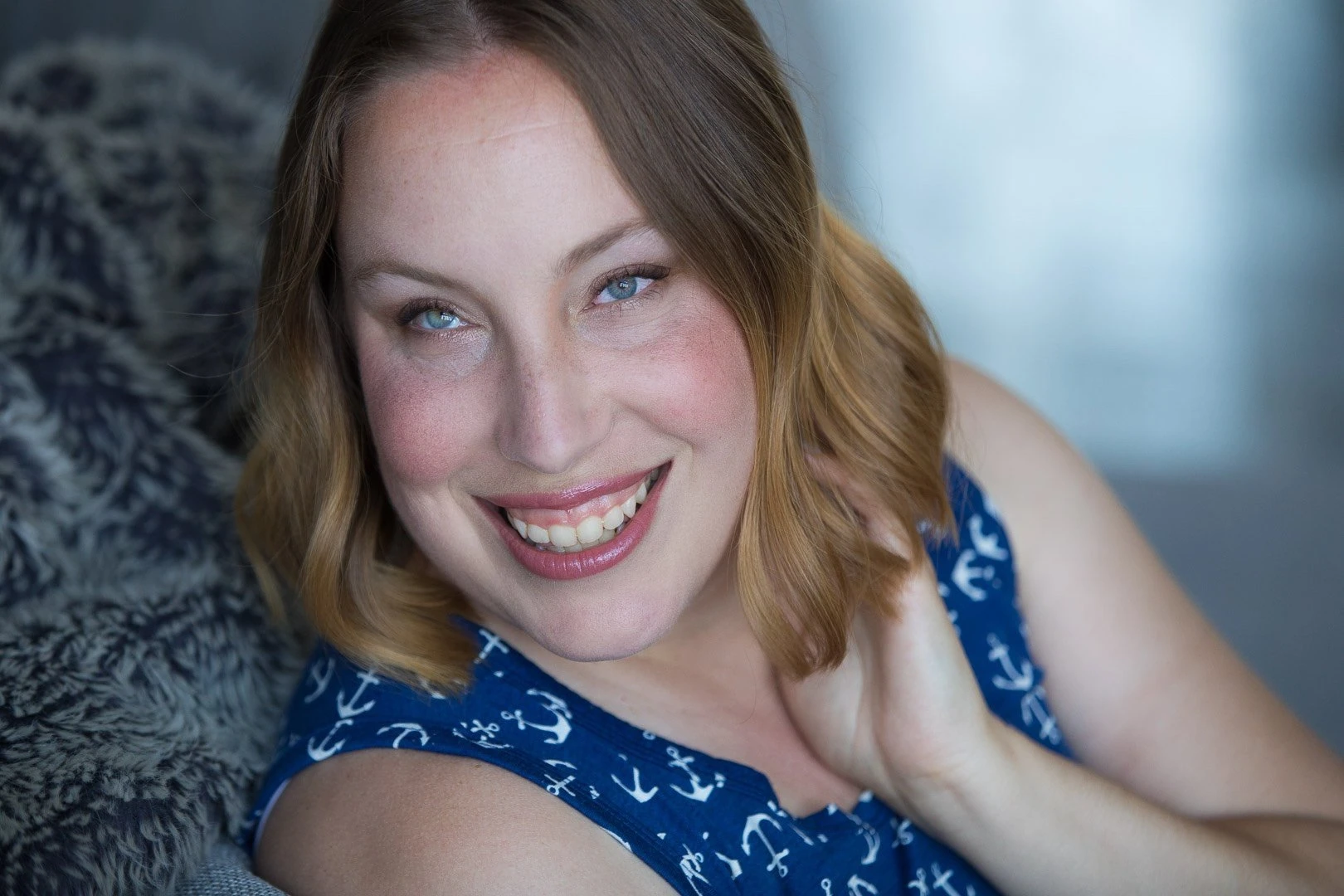
Tiffany Taylor, a queer, disabled performer and access advisor, was one of the patrons who availed themselves of that early foray into audio description at The Way You Look (at me) Tonight — her first encounter with the practice. Even with her BA in theater from Adrian College in Michigan, Taylor was accustomed to being sidelined as an artist and audience member due to her blindness.
“I was the only physically disabled student in the entire program, and the staff had never worked with students with disabilities before,” she says. “I was excluded from dance and stagecraft classes because of ableist beliefs. I was also not cast in very many productions because of this.”
But at The Way You Look (at me) Tonight, Taylor not only felt fully included — she felt inspired to resume her performance practice in ways that had previously been denied her.
Weighed down by negative news?
Our smart, bright, weekly newsletter is the uplift you’ve been looking for.“I had never seen an accessible performance or disabled performers before seeing The Way You Look (at me) Tonight with Jess and Claire,” she says. “That really was the starting point of me taking contact improvisation classes from Jess and others. This also was what started my working with Gravity.”
Now, as one of Gravity Access’ core consultants and a board member, Taylor is able to offer meaningful critique and suggestions to Gravity’s team of audio describers before and after performances (depending on the show and the contracted service). She also offers her expertise and lived experience more broadly as an accessibility consultant with Gravity, working with companies on their marketing materials and websites to ensure that they are accessible to the visually impaired, and on strategies for community outreach and engagement with visually impaired patrons. In part, she notes, so “I am not the only one responsible for bringing disabled audiences.”
Rachael Dichter — who, with Gabriele Christian, was recently appointed Interim Artistic Director of Gravity — has been part of the audio description team since its inception. A dancer and Curtis’ life partner, she’s worked off-and-on with Gravity since 2010, and began her journey with audio description as soon as Curtis began trialing it. Over the years she’s described numerous dance and theater performances, learning, she says, more with each production. Her ballet background makes her a natural fit as the primary describer for Smuin Ballet, and she recently described a performance by Les Ballets Trockadero de Monte Carlo (“the world’s foremost gender-skewering comic ballet company”), presented by Cal Performances in Berkeley.
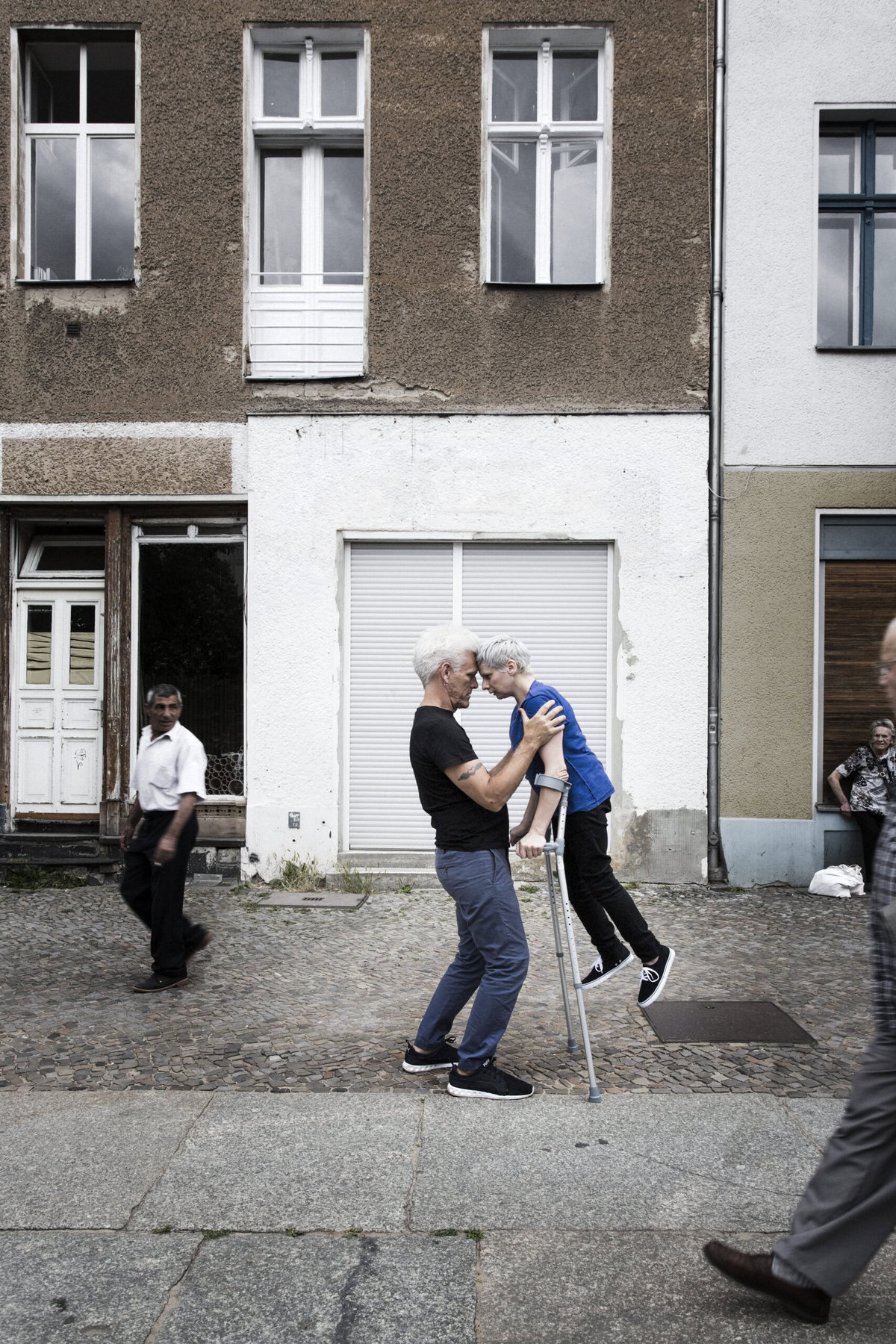
While she mostly avoids using technical dance vocabulary for all but the most dance-savvy patrons, describing these performances gives her plenty of opportunity to play with sensorial imagery. She’ll often sit down with the director beforehand to determine if there are any “juicy, visceral images that they’ve been working with,” to incorporate into her descriptions.
From partnering with local organizations such as LightHouse for the Blind, Gravity has developed long-standing professional and personal connections to the communities they serve. As early as 2016, Gravity was inviting LightHouse to attend its shows that included audio description, starting with The Way You Look (at me) Tonight. More recently, Maia Scott, one of LightHouse’s program coordinators, has worked closely with the company on the programming side, organizing a panel discussion on access practices and a workshop on “light painting” with blind visual artist Gerald Pirner in 2023.
Local theater companies have also leaned into fostering closer relationships with LightHouse and other organizations that serve the blind and low-vision community. The Berkeley-based Shotgun Players, among Gravity Access’ early adopters, now offer at least one audio-described performance for each of their mainstage shows. According to Shotgun’s managing director Liz Lisle, they’ve been getting input from a Blind & Low Vision advisory group, which offers suggestions on aspects of the Shotgun experience overall such as wayfinding and the lobby experience. They also offer discounted passes to visually impaired patrons in order to keep them as audience members throughout the season.
For Scott, the energy and expectations around access in what she terms the “post-ADA” generations is a welcome sea change. But because accessibility measures such as audio description are still not universally available, she observes that “it’s taking a lot of work and reconditioning expectations for the blind and low-vision community to look for accessible programming in the visual arts, be it museums, physical theater or dance.” To spend money on a service that is then not utilized when it’s offered can be a barrier to an organization providing it. But blind and low-vision communities can, and do, rally around organizations making the effort, as Shotgun’s growing BLV audiences demonstrate. Another way to instill access practices, Scott shares, is “from the foundation up”: educating students, especially in the arts, about “disability access and inclusion for their patrons and audiences,” in order to raise awareness and make such practices a part of the standard operating procedures in the arts outside the classroom.
Meanwhile, Gravity Access continues to grow, expanding its reach beyond the Bay Area and becoming a national leader in the still-emergent audio description movement. Gravity’s in-demand status is underscored by its ability to continue offering its services despite the unexpected passing of its founder in March of this year.
Gravity Access program director Michael Whitson affirms that the company is “structurally and financially sound,” adding that “Jess had been diligent in the last 2 years to cultivate new and effective staffing.” To date, Whitson estimates, the company has described over 220 individual performances for an estimated 880 patrons since 2019. They’re expanding their current cohort of audio describers from six to eight, continuing to audit and educate companies in website and marketing accessibility, and hosting an event calendar of upcoming performances around the Bay Area that are offering access measures such as audio description, ASL interpretation and relaxed performances for folks who experience sensory sensitivities or feel discomfort with theater audience “expectations” like remaining in your seat or not vocalizing during performances. Gravity Access has also been willing to travel, working with organizations such as the Oregon Shakespeare Festival, Rosy Simas Danse in Minnesota and Nel Shelby Productions in New York. And across the US, companies devoted to bringing audio description to their communities are emerging, such as the recently established Audio Description Learning Network (ADLN) in Philadelphia and the Central Florida Audio Description Initiative (CFADI).
One final piece that Curtis emphasized in our conversation is the importance of not treating audio description or other access practices as just mechanisms for audience building, but as tools of opportunity for artists and administrators of diverse abilities as well.
“The more diverse your staff is, the more clear access needs will become,” he asserted. “There are blind actors. There are blind dancers. There are deaf actors and dancers. … Producing plays with deaf characters and then hiring deaf actors to do them … or blind actors and blind characters, I think is also an important thing. … Inclusion is not just for the audience. It’s really all over — in theater and in the offices and backstage as well.”
Author’s Note: I began working on this piece in February 2024 and was fortunate enough to interview Curtis two weeks before he unexpectedly passed away on March 11. I had the pleasure of interviewing him multiple times over the years about this project as it developed, and am both honored to have gotten the chance to do so one last time, and grateful to the other interviewees of this piece for their timely contributions.





